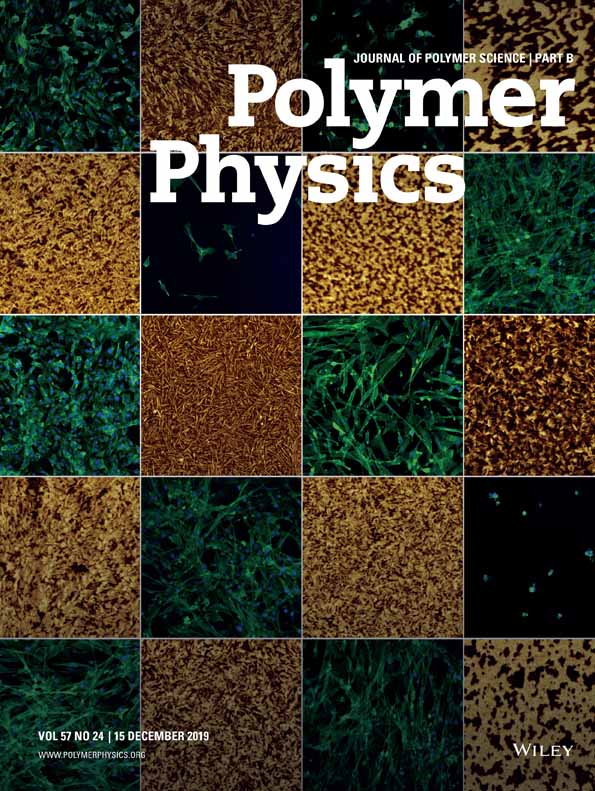Viscoelastic behaviors and molecular motions of highly syndiotactic poly(vinyl alcohol) fibers
Abstract
The viscoelastic behavior and molecular motion of highly syndiotactic poly(vinyl alcohol) (S-PVA) fibers with a dyad syndiotacticity (r) of 69% were studied by dynamic mechanical thermal analysis and wide-angle X-ray diffraction and compared with those of atactic poly(vinyl alcohol) (A-PVA) fibers with r = 54%. The βc dispersion, based on the molecular motion of the chain molecules in the crystalline regions, was observed for A-PVA around 120–140 °C, and the only primary (αc) dispersion was observed for S-PVA around 180 °C. The thermal expansion coefficients for the a and c axes of the A-PVA crystal changed discontinuously around 120 °C, which corresponded to the βc dispersion. For S-PVA, the coefficient for the (002) plane changed discontinuously around 100 °C, similarly to A-PVA, but that for the (100) plane remained unchanged between 20 and 220 °C. These results showed that the intermolecular hydrogen bonding of S-PVA was stronger in the direction of the a axis than in the other directions, suppressing the βc dispersion. The storage modulus and thermal expansion coefficient of the (020) plane (molecular axis) of S-PVA decreased markedly around 180 °C, and this indicated that the αc dispersion was due to the torsional motion of the molecular chains in the crystalline regions. © 2004 Wiley Periodicals, Inc. J Polym Sci Part B: Polym Phys 42: 800–808, 2004




